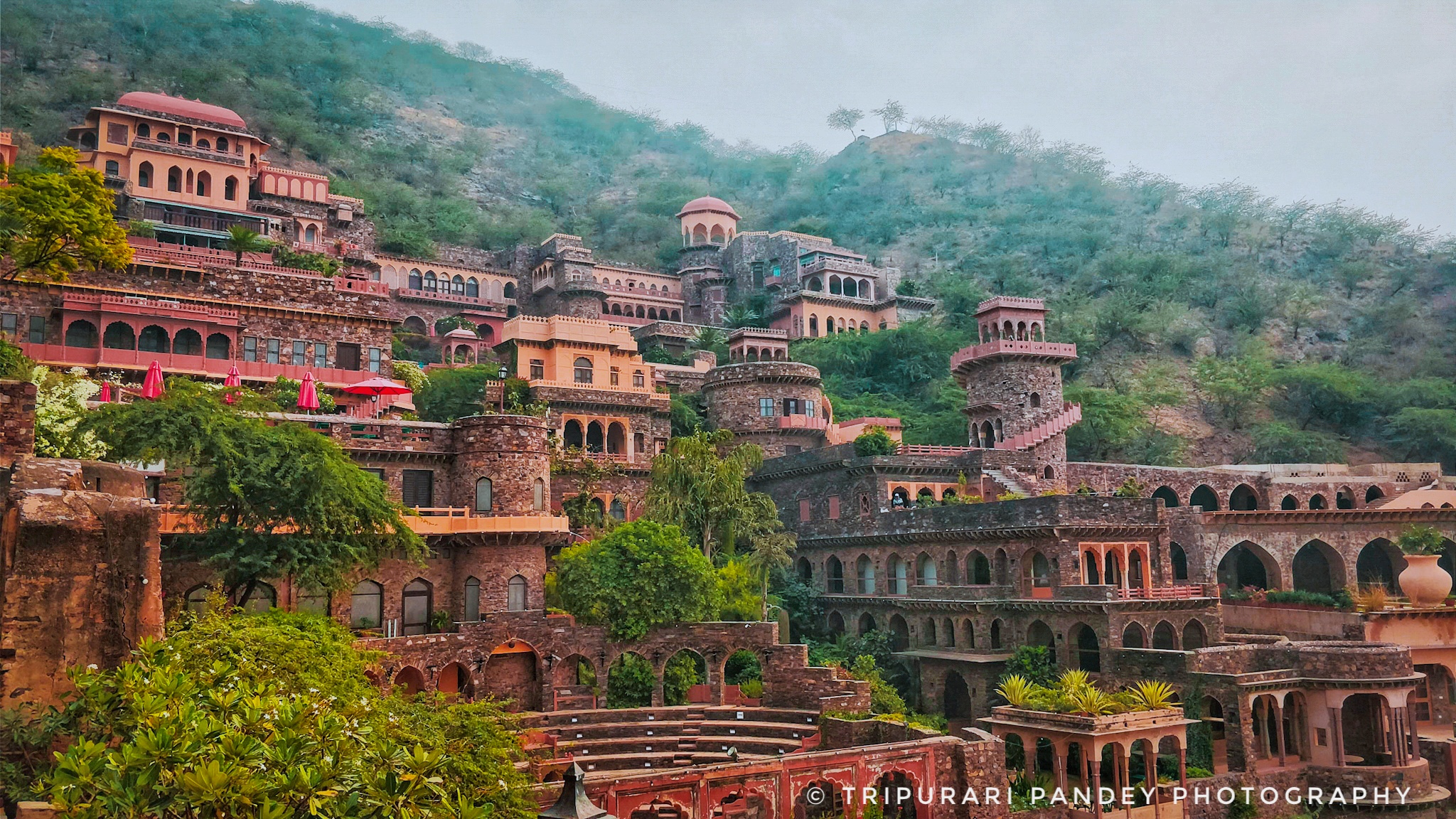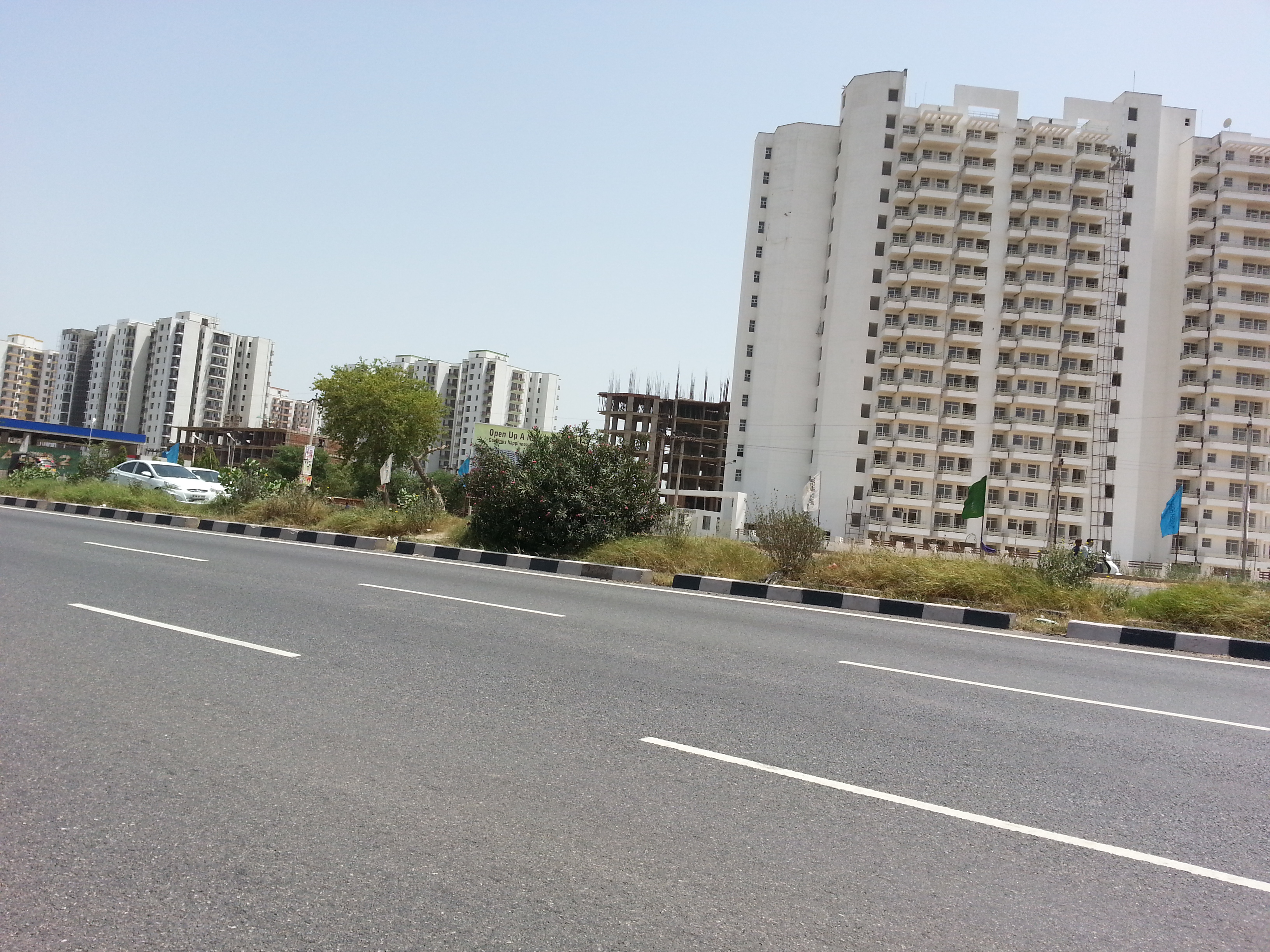|
Neemrana
Neemrana is an ancient historical town in Alwar district of Rajasthan, India, from Alwar city, from New Delhi and from Jaipur on the Delhi-Jaipur highway in Neemrana tehsil. It is between Behror and Shahajahanpur. Neemrana is an industrial hub.It is the site of a 15th-century hill-fort occupied by Chauhans till 1947. The erstwhile ruling family is considered to be of the direct lineage of Prithviraj Chauhan. Some distance from Neemrana is another fort, Kesroli in Alwar district, that is one of the oldest heritage sites. Historians trace it to the Matsya Janapada of the Mahabharata times. In Kesroli one gets to see the oldest remains of Buddhist Vihara at Viratnagar where the Pandavas spent the last year of their exile incognito; Pandupole, with the only reclining statue of Hanuman; the samadhi of the ruler saint Bhartrihari. Rulers of Neemrana The Rajas of Nimrana belong to the Sankat sub-clan and Kharak family of the Chauhan clan. Rao Rajdeo, Rao of Nimrana was the f ... [...More Info...] [...Related Items...] OR: [Wikipedia] [Google] [Baidu] |
Behror
Behror () is a city in the Alwar district of Rajasthan. It serves as the administrative headquarters of the eponymous Behror Tehsil. Situated 120 km south-west of national capital, New Delhi, and part of the National Capital Region, it also comes under National Capital Region Planning Board, a federal authority for urban planning purposes in the region. It is clubbed under Shahjahanpur-Neemrana-Behror Complex in the National Capital Region, which includes 137 revenue villages. In this cluster, Behror municipality is the largest urban conglomeration. This region is also known as 'Ahirwal region' and serves as an industrial hub for the state of Rajasthan. Behror municipality, spread out in an area of 15 km2, is divided into four revenue villages, namely Behror tarf Gangabishan, Behror tarf Doongrasi, Behror tarf Nainsukh, and Behror tarf Balram. Economy Behror has an economy that supports more than 225,000 jobs and features industrial areas like Keshwana Industrial A ... [...More Info...] [...Related Items...] OR: [Wikipedia] [Google] [Baidu] |
Alwar District
Alwar is a district in the state of Rajasthan in northern India, whose district headquarters is Alwar city. The district covers 8,380 km2. It is bound on the north by Rewari district of Haryana, on the east by Bharatpur district of Rajasthan and Nuh district of Haryana, on the south by Dausa district, and on the west by Jaipur district. As of 2011 it is the third most populous district of Rajasthan (out of 33) after Jaipur and Jodhpur. Topography The district is a fairly regular quadrilateral in shape with its central northern portion consisting of tahsil Mandawar hemmed in by the protruding north of tahsil Behror on the west and tahsil Tijara on the east and its south eastern corner consisting of Lachhmangarh tahsil slightly flapping outward into Bharatpur district. Ridges of rocky and precipitous hills, for the most part parallel, are a feature observable throughout the whole district which, however, is generally open to the north and east. The conspicuous ... [...More Info...] [...Related Items...] OR: [Wikipedia] [Google] [Baidu] |
Alwar
Alwar (Pronunciation: �lʋəɾ is a city located in India's National Capital Region and the administrative headquarters of Alwar District in the state of Rajasthan. It is located 150 km south of Delhi and 150 km north of Jaipur. At present the district is famous for production of Mustard Crop in the region, manufacturing of Ray Ban eyeglasses, Beer production plants and frozen food industry. Etymology There are many theories about the derivation of the name Alwar. Cunningham holds that the city derived its name from the Salva tribe and was originally Salwapur, then Salwar, Halawar and eventually Alwar, According to another school it was known as Aravalpur or the city of Aravali. Some others hold that city is named after Alaval Khan Mewati (Khanzada prince who wrested Alwar from Nikumbh Rajputs). A research conducted during the reign of Maharaja Jai Singh of Alwar revealed that Maharaja Alaghraj, second son of Maharaja Kakil of Amber. ruled the area in the eleven ... [...More Info...] [...Related Items...] OR: [Wikipedia] [Google] [Baidu] |
Rajasthan, India
Rajasthan (; lit. 'Land of Kings') is a state in northern India. It covers or 10.4 per cent of India's total geographical area. It is the largest Indian state by area and the seventh largest by population. It is on India's northwestern side, where it comprises most of the wide and inhospitable Thar Desert (also known as the Great Indian Desert) and shares a border with the Pakistani provinces of Punjab to the northwest and Sindh to the west, along the Sutlej-Indus River valley. It is bordered by five other Indian states: Punjab to the north; Haryana and Uttar Pradesh to the northeast; Madhya Pradesh to the southeast; and Gujarat to the southwest. Its geographical location is 23.3 to 30.12 North latitude and 69.30 to 78.17 East longitude, with the Tropic of Cancer passing through its southernmost tip. Its major features include the ruins of the Indus Valley civilisation at Kalibangan and Balathal, the Dilwara Temples, a Jain pilgrimage site at Rajasthan's only hill station ... [...More Info...] [...Related Items...] OR: [Wikipedia] [Google] [Baidu] |
Shahjahanpur Village, Neemrana
Shajahanpur Village, Neemrana is on National Highway number 8 from Delhi to Jaipur. Demographics As of 2011 India census The 2011 Census of India or the 15th Census of India, Indian Census was conducted in two phases, house listing and population enumeration. The House listing phase began on 1 April 2010 and involved the collection of information about all build ..., Shahjahanpur had a population of 1804 in 352 households. Males (931) constitute 51.6% of the population and females (873) 48.39%. Shahjahanpur has an average literacy (1226) rate of 67.96%, less than the national average of 74%: male literacy (729) is 59.46%, and female literacy (497) is 40.53%. In Shahjahanpur, 10.75% of the population is under 6 years of age (194). References Villages in Alwar district Neemrana {{Haryana-geo-stub ... [...More Info...] [...Related Items...] OR: [Wikipedia] [Google] [Baidu] |
Rajasthan
Rajasthan (; lit. 'Land of Kings') is a state in northern India. It covers or 10.4 per cent of India's total geographical area. It is the largest Indian state by area and the seventh largest by population. It is on India's northwestern side, where it comprises most of the wide and inhospitable Thar Desert (also known as the Great Indian Desert) and shares a border with the Pakistani provinces of Punjab to the northwest and Sindh to the west, along the Sutlej- Indus River valley. It is bordered by five other Indian states: Punjab to the north; Haryana and Uttar Pradesh to the northeast; Madhya Pradesh to the southeast; and Gujarat to the southwest. Its geographical location is 23.3 to 30.12 North latitude and 69.30 to 78.17 East longitude, with the Tropic of Cancer passing through its southernmost tip. Its major features include the ruins of the Indus Valley civilisation at Kalibangan and Balathal, the Dilwara Temples, a Jain pilgrimage site at Rajasthan's only hi ... [...More Info...] [...Related Items...] OR: [Wikipedia] [Google] [Baidu] |
Chauhan
Chauhan, historically ''Chahamana'', is a clan name historically associated with the various ruling Rajput families during the Medieval India in Rajasthan. Subclans Khichi, Hada, Songara, Bhadauria, Devda etc. are the branches or subclans of Chauhan Rajputs. Origin The word ''Chauhan'' is the vernacular form of the Sanskrit term ''Chahamana'' (IAST: Cāhamāna). Several Chauhan inscriptions name a legendary hero called Chahamana as their ancestor, but none of them state the period in which he lived. The earliest extant inscription that describes the origin of the Chauhans is the 1119 CE Sevadi inscription of Ratnapala, a ruler of the Naddula Chahamana dynasty. According to this inscription, the ancestor of the Chahamanas was born from the eye of Indra. The 1170 CE Bijolia rock inscription of the Shakambhari Chahamana king Someshvara states that his ancestor Samantaraja was born at Ahichchhatrapura (possibly modern Nagaur) in the gotra of sage Vatsa. The 1262 C ... [...More Info...] [...Related Items...] OR: [Wikipedia] [Google] [Baidu] |
Hanuman
Hanuman (; sa, हनुमान, ), also called Anjaneya (), is a Hindu god and a divine '' vanara'' companion of the god Rama. Hanuman is one of the central characters of the Hindu epic ''Ramayana''. He is an ardent devotee of Rama and one of the Chiranjivis. Hanuman is regarded to be the son of the wind-god Vayu, who in several stories played a direct role in Hanuman's birth, and considered to be an incarnation or son of Shiva in Shaivism. Hanuman is mentioned in several other texts, such as the epic ''Mahabharata'' and the various Puranas. Evidence of devotional worship to Hanuman is largely absent in these texts, as well as in most archeological sites. According to Philip Lutgendorf, an American Indologist, the theological significance of Hanuman and devotional dedication to him emerged about 1,000 years after the composition of the ''Ramayana'', in the 2nd millennium CE, after the arrival of Islamic rule in the Indian subcontinent.Paula Richman (2010), ''Revie ... [...More Info...] [...Related Items...] OR: [Wikipedia] [Google] [Baidu] |
Pandavas
The Pandavas (Sanskrit: पाण्डव, IAST: Pāṇḍava) refers to the five legendary brothers— Yudhishthira, Bhima, Arjuna, Nakula and Sahadeva—who are the central characters of the Hindu epic ''Mahabharata''. They are acknowledged as the sons of Pandu, the King of Kuru, but were fathered by different ''Devas'' (gods) due to Pandu's inability to naturally conceive children. In the epic, the Pandavas married Draupadi, the princess of Panchala, and founded the city of Indraprastha after the Kuru Kingdom was split to avoid succession disputes. After their paternal cousins the Kauravas—led by Duryodhana—tricked them into surrendering their kingdom and refused to return it, the Pandavas waged a civil war against their extended family, and this conflict was known as the Kurukshetra War. With the help of the god Krishna, the Pandavas eventually won the war with the death of the Kauravas, albeit at great cost. Etymology The word ''Pandava'' ( sa, पाण� ... [...More Info...] [...Related Items...] OR: [Wikipedia] [Google] [Baidu] |
Viratnagar
Viratnagar previously known as Bairat ( IAST: ) or Bairath ( IAST: ) is a town in northern Jaipur district of Rajasthan, India. History Ancient era According to Huen Tsang, visitor to China, Tonk was under Bairath State or Viratnagar previously known as ''Bairat'' or ''Bairath''. The present-day site of Bairat corresponds to the ancient city of Virāṭanagara, which was the capital of the Iron Age Matsya kingdom (c. 1400-c. 350 BC), which was one of the ''solasa'' (sixteen) Mahajanapadas (great kingdoms) according to the 6th BCE Buddhist text ''Anguttara Nikaya''. Matsya kingdom had Kuru and Surasena mahajanapadas to its north and east respectively. Medieval era Bairat was a part of the Mauryan Empire. The ruins of the ''Bijak-ki-pahadi'' ( Bairat Temple), a Buddhist Chaitya (chapel) from the 3rd century BCE located in Bairat, are the oldest free-standing Buddhist structures in India. The town is also home to ruins of a Buddhist monastery, a wood and timber shrin ... [...More Info...] [...Related Items...] OR: [Wikipedia] [Google] [Baidu] |
Samādhi
''Samadhi'' (Pali and sa, समाधि), in Buddhism, Hinduism, Jainism, Sikhism and yogic schools, is a state of meditative consciousness. In Buddhism, it is the last of the eight elements of the Noble Eightfold Path. In the Ashtanga Yoga tradition, it is the eighth and final limb identified in the ''Yoga Sutras'' of Patanjali. In the oldest Buddhist suttas, on which several contemporary western Theravada teachers rely, it refers to the development of an investigative and luminous mind which is equanimous and mindful. In the yogic traditions, and the Buddhist commentarial tradition on which the Burmese Vipassana movement and the Thai Forest tradition rely, it is interpreted as a meditative absorption or trance, attained by the practice of '' dhyāna''. Definitions ''Samadhi'' may refer to a broad range of states. A common understanding regards ''samadhi'' as meditative absorption: * Sarbacker: ''samādhi'' is meditative absorption or contemplation. * Diener, Erhard & ... [...More Info...] [...Related Items...] OR: [Wikipedia] [Google] [Baidu] |








